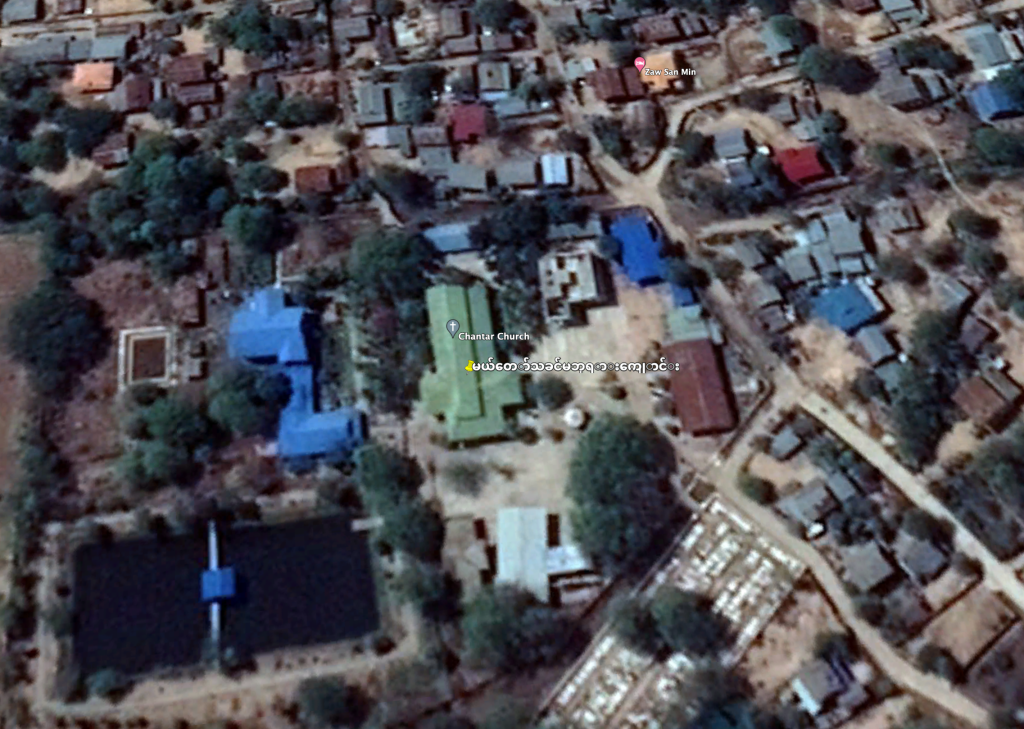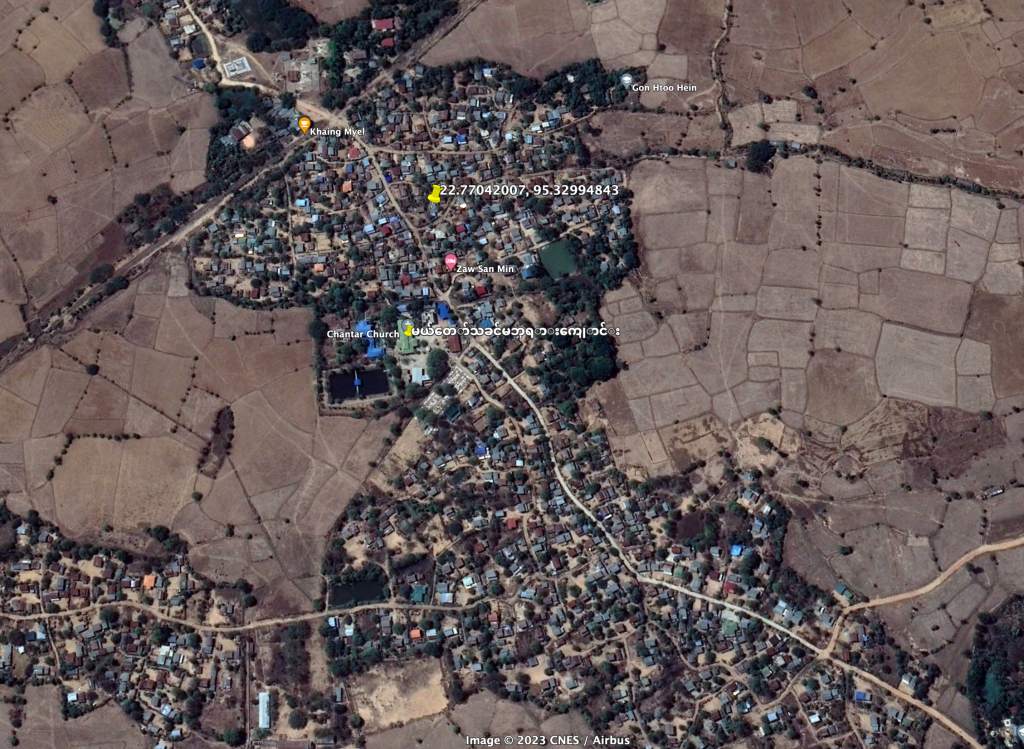JANUARY 15, 2023
Junta Forces Destroy the Oldest Burmese Catholic Church
Chan Thar Village, Sagaing Region // On January 14th, military troops came into this village located in Ye Oo township. At 6 am, the next day, they started destroying the village, according to a local resident, “In the early morning, they burned down churches, monasteries, orphanages, the public hall, and public schools. They slept at the school and some houses the night before and in the morning they burned it all down. The military burned down the village four times. Almost all houses were burned down and only 14 houses are left.” Over a hundred houses were burned down on this day.
The culprits are 200 soldiers from two Light Infantry Battalions, the LIB-701 based in Hmawbi, Yangon Region under the command of Regiment (77) and the LIB-364 based in Maw Laik under the command of the 10th Military Operations Command, along with members of the pro-military militia Pyu Saw Htee. Additionally, they arrested and took 30 villagers as hostages and as porters to carry their weapons and cook for them. The other villagers ran away and left their houses and their animals before the military troops came. They went to Ye Oo city and stayed in Ma Gyi Taw. According to our interview with Father Richard, “As soon as the villagers got information about the arrival of the military troops, they ran away to the forest as far as they could so they could find temporary shelters.”
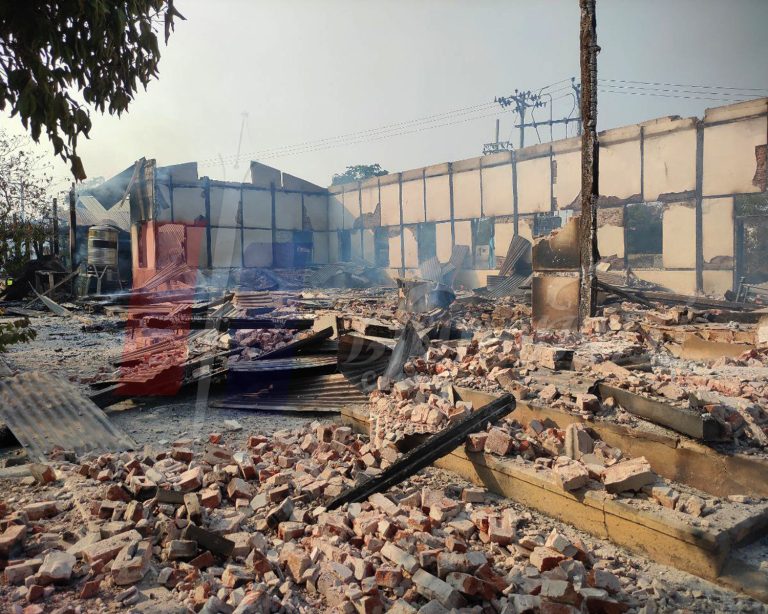
They left in such a hurry that they don’t know exactly how many animals they have lost or how much jewelry was stolen.
The most significant building that was burned was a 128-year-old Catholic Church. The church was much honored and valued by the Christians in the area. The monument was built by Portuguese traders and was of historical importance not only for the Catholic Church but for the whole country. Dating from 1894, the church is the oldest Burmese Catholic Parish and the pride of the Upper Burma Catholic Church. The very first Burmese Bishop was baptized in this church as a child. This parish had provided Archbishops and many priests and nuns to the Church and Catholic community. The Church was named after the Assumption of Our Lady.
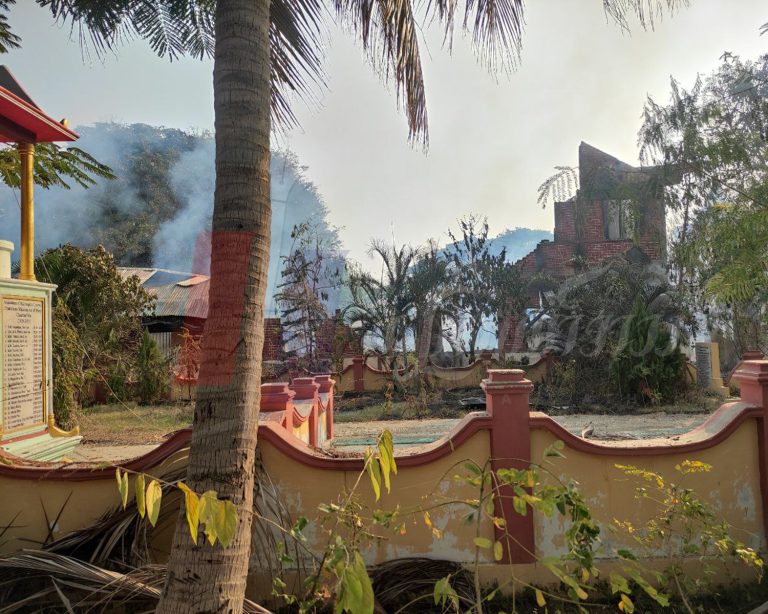
Historical background
The history of Portuguese Catholics in Myanmar is 400 years long according to Frontier Myanmar . Since the Taungoo dynasty, Portuguese descendants of traders have been living in the areas between Chindwin and Muu rivers. The first Portuguese arrivals were in the sixteenth century but did not start settling there until the early 17th century. One of the best-known Portuguese adventurers was Felipe de Brito e Nicote and he served under the Rakhine king, Min Razagyi. At first, the Portuguese were living as traders in Thanlyin, the city located on the opposite side of Yangon. They built the country’s first Catholic Church in this location.
The Taungoo dynasty king, Anaukpetlun, captured Thanlyin and about 5000 Portuguese people were taken as prisoners to Ava, the capital of Taungoo. King Thalun took over the dynasty following Anaukpetlun’s reign in 1628. He gave the Portuguese and all mixed races the land near Sagaing. This area used to be called “Anya”. Starting from this period Roman Catholic Churches were established across the central part of Myanmar by the Portuguese. This is where the most traditional Myanmar people were living, and the exposure to foreign ideas and people that occurred during this period led to an alteration of their previous way of life.
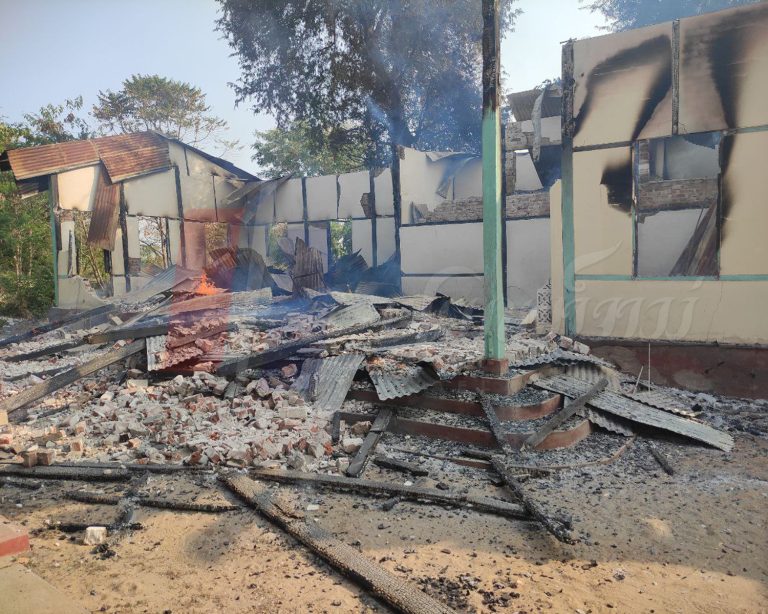
For more than a year, junta soldiers already tried three times to burn all the buildings in this village but some structures like the church remained. On January 10th, 2022, military troops shot to death three men in Chan Thar. They were all around 30 years old and their names were Ko Zaw Gyi, Ko Soe Thu, and Ko Zaw Tun. On July 8th, 2022, a female shopkeeper, Ma Aye Su Yi was also arrested and there is no information about her whereabouts to this day.
During their fourth attempt in mid-January, not only was the church burned down, but also other small religious buildings in the church compound. Additionally, 80 houses of church members, and 70 houses of Buddhists were burnt to ashes. 80% of the 500 houses in the village were destroyed. Only 40 of the 295 houses owned by Christians remain. One resident said “At night, they burned the church and we can see the sad view of the flame on our Church’s Bell Tower from far away where we are hiding. It seems that on January 15, they also burned the Father’s residence and the rest of the buildings before they left the village. The Church Father’s residence was still burning in the afternoon.”
Beyond the destruction of religious monuments and structures in Chan Thar village, there is a nationwide problem of attacks on people and institutions associated with religions. On February 17th, 2023, a 70-year-old Buddhist nun was burned alive by the military junta. She is the 3000th person who has been killed by soldiers since the coup and of which death has been verified by Assistance Association for Political Prisoners of Burma (AAPP).
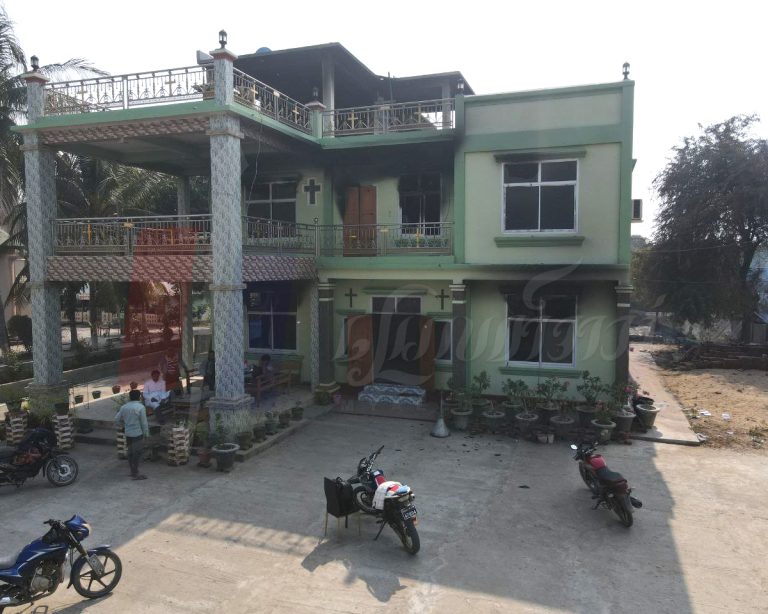
Though the junta is often associated with Buddhist nationalism, it does not mean Buddhist religious figures are completely immune to their attacks. Some nuns and monks are committed to a position of nonviolence and engage in demonstrations of resistance to the current regime. This puts them in a position to be potential victims of the junta’s violence along with Muslims and Catholics. But some Buddhist nuns and monks are instead involved in encouraging the persecution of religious minorities and openly support the current regime. In Sagaing region, a monk named Warthawa is the most infamous representative of this ultra-nationalist agenda.
A priest operating underground in Yangon said, “It is such a sorrowful situation. No one has spoken out against the tragedy of a centuries-old Church being burnt to the ground. Even the remaining Catholic Churches of Myanmar haven’t released a statement. Moreover, none of these organizations have dared to express their opposition to religious and ethnic-baed discrimination, as well as unlawful operations. Though they have religious and moral attachments to the church and other structures that have been destroyed, they fear retaliation and persecution by the junta.”
